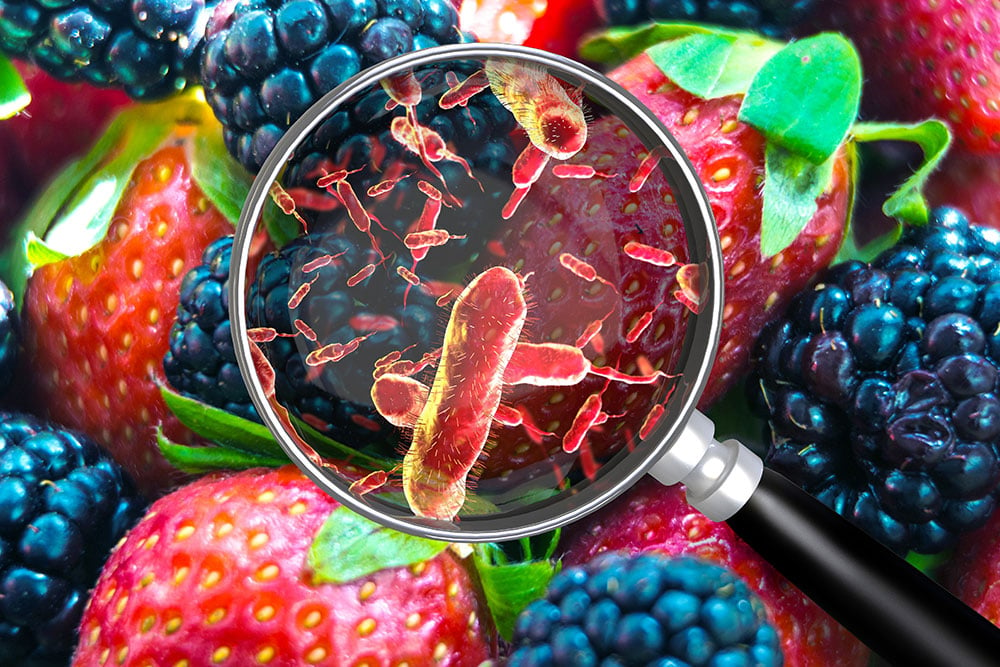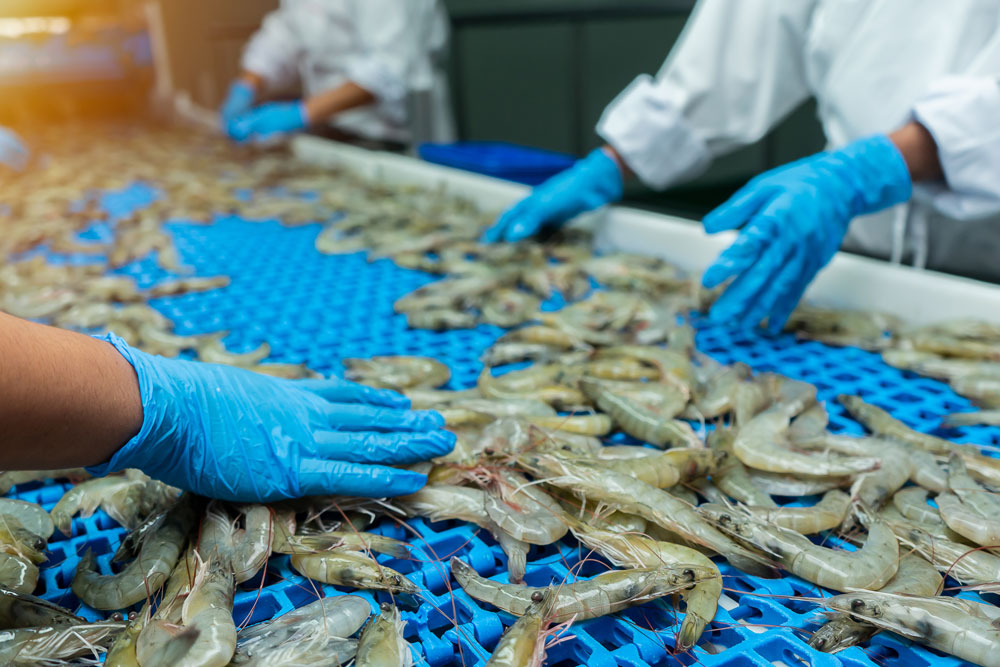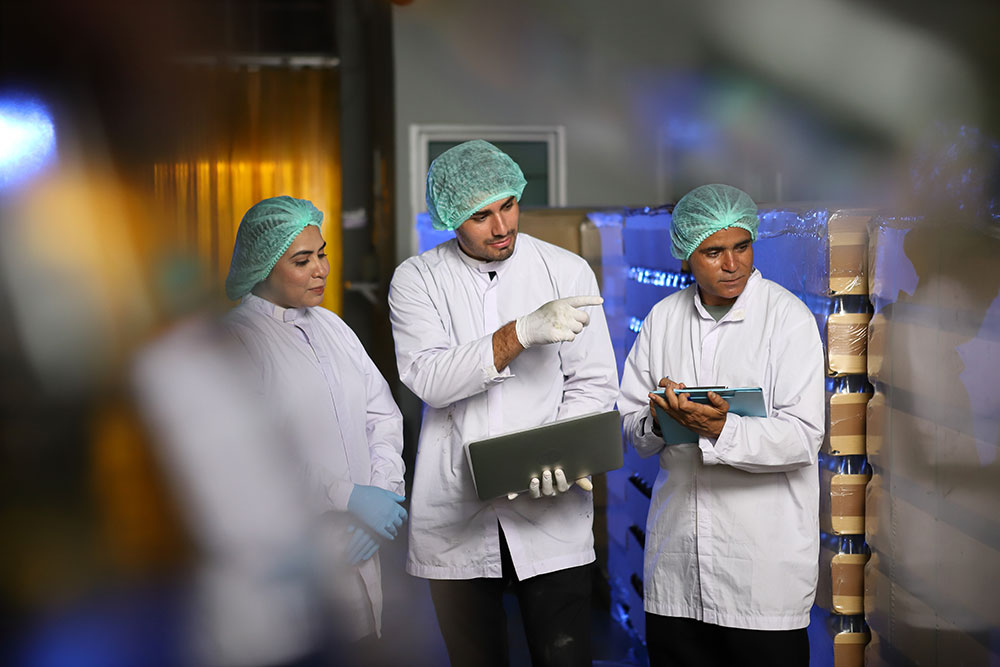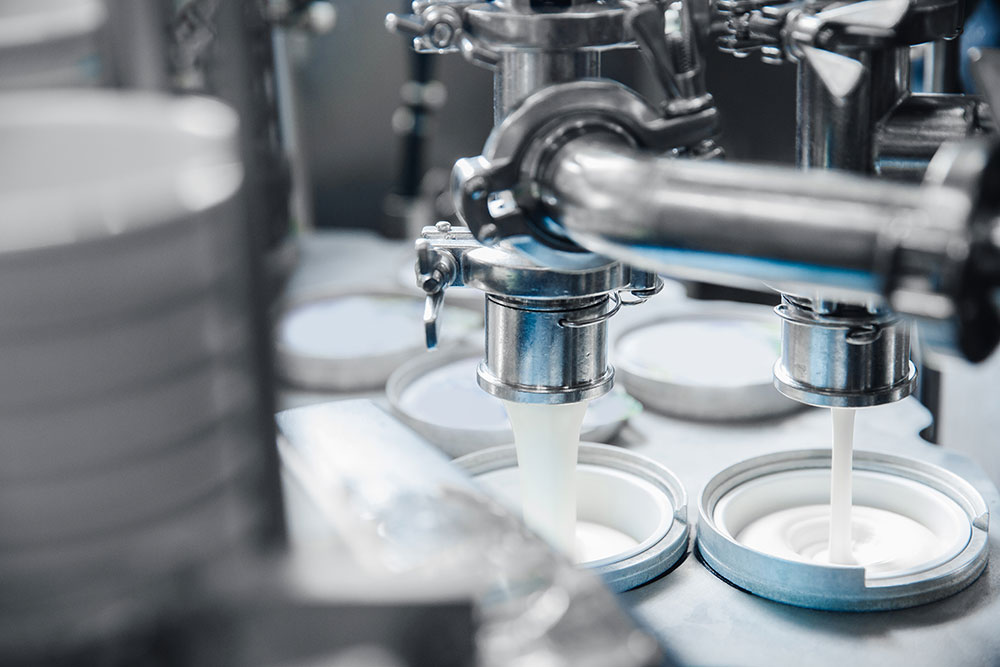Foodborne illnesses are a serious problem in the food industry. Every year, 600 million cases of foodborne illnesses occur worldwide, that are caused by some form of contamination.
The most common form of food contamination is biological contamination, which causes various illnesses and often leads to the spoiling of food products. It is vital to understand what biological contamination is, its sources, and how to prevent it from occurring.
Biological Contamination Definition
Biological contamination refers to the contamination of foods by other living organisms, also called microorganisms.
Some microorganisms in food are beneficial, and provide good, safe bacteria, while others do the opposite. Bad microorganisms, collectively called pathogens, lead to foodborne illnesses that can have life-threatening effects.
What are the Common Types of Biological Contaminants in Food?

Biological contamination in food can be broken into five different types:
1. Bacteria
Bacteria are the most common of the contaminants, which are present in many types of food, on food, food handlers, and on food-contact surfaces. Bacteria-based contaminants have a significant risk of cross-contamination and can come from various sources.
2. Fungi
Fungal contaminants like molds and yeast are another concern for food products. They can thrive in acidic conditions and spread by spores traveling through the air.
3. Viruses
Typically, viruses only affect living organisms like humans and animals, though they can also be transmitted via certain foods. Some viruses can travel through water to contaminate foods like seafood, fruits, and vegetables, which can be eaten raw, which increases the chances of infection.
4. Parasites
Parasites are most common in raw meats and are unseen by the naked eye. They not only cause bacterial contamination but can also harm their host. They are transmitted from host to host via contaminated foods.
5. Toxins
Toxins are another biological contamination example that can come from various sources, including other contaminants like molds and bacteria, which can release toxins. They typically cause more acute symptoms, but toxin-producing pathogens can cause serious damage because they are undetectable to the human eye and are more resistant to processing methods.
What are Some Examples of Biological Contamination?
There are over 250 different examples of biological contamination. Some of the more well-known viruses, referred to as the "Big 6" include Norovirus, Hepatitis A, E.Coli, Non-typhoidal Salmonella, Typhoidal Salmonella, and Shigella.
Norovirus is the top cause of foodborne illness. It is the 4th-ranked cause of foodborne deaths and the 5th cause of disability, with over 685 million cases worldwide. It most commonly spreads through contaminated food and water, but can also spread from human to human.
What are the 4 Sources of Biological Contamination?
Contamination can occur during any stage of the processing system. You need to understand what it is and the sources to prevent it from occurring. Here are the 4 main areas of biological contamination:
1. Soil and Water
Inadequate agricultural practices can affect various food-related products and raw materials. Using manure as fertilizer poses a significant risk as many pathogens travel through fecal matter. Pathogens can also travel through water sources and can contaminate anything it encounters.
2. Cross-Contamination
Cross-contamination is another source of biological contaminants which is often overlooked. With cross-contamination, pathogens transfer through contact with a contaminated product. It results from improper food handling and poor employee and facility hygiene habits.
3. Raw Materials
Virtually all raw materials will have microorganisms on their surfaces. Working with sources that implement good manufacturing and agricultural practices can help to ensure that raw materials have less or no microorganisms that can result in contamination.
4. Pests
While pests are commonly considered physical contamination, this is also a biological component. Pests are known to carry various harmful pathogens. Even slight contact with food products can lead to contamination.
What are the Effects of Contamination?
Biological contamination in food can affect consumerism and public health. The potential foodborne illnesses can affect thousands of people and be fatal. Of the numerous cases, about 3,000 U.S. and 420,000 consumers worldwide will die from foodborne illnesses. Some groups, including children, older people, and the immunocompromised, are more vulnerable.
Foodborne illness can also affect the economy; when people are sick, they cannot work, and the economy will suffer. It also increases the demand for medical care, which can overwhelm doctors. Finally, trust in the company will fall, which will cause the business to suffer a serious loss in revenue.
Detecting Biological Contamination in Food
Biological contaminants aren't visible to the naked eye until mold or other fungi form. While you can rely on visual signs, many detection methods remain. Three notable methods include:
1. Observing Food Products and Raw Materials
Always inspect your food products and raw materials for signs of spoilage. Discoloration, unusual softness, a slimy surface, and a bad smell are some signs to watch for.
2. Traditional Plating Methods
It is time-consuming, but microbial plating is a reliable method of detecting biological contaminants. It is commonly used to cross-check the results of more advanced detection methods.
3. Advanced Testing
There are advanced test kits for faster, more accurate testing. They are designed to detect specific targets and give you results in a much shorter time frame. They are more expensive than the more conventional methods but offer more variety, including tests to detect typically undetectable contaminants, including toxins like endotoxin contamination.
Avoiding Biological Contamination
Many methods exist to avoid biological contamination, but it all starts with a sanitary facility. Installing reliable, food-grade floor drainage is one step to ensure that your facility meets sanitation requirements.
Water is one of the top sources of biological contamination. A floor drain helps to keep water from collecting on the facility floor and eliminates the risk of water-borne pathogens from taking root.
One company that makes reliable floor drains for the food industry is FoodSafe Drains.
FoodSafe Drains products all feature an NSF/ANSI/3-A certified design made with T304 and T316 stainless steel. The design ensures that the interior has a fully radius-edge design, with no sharp corners, grooves, or seams where bacteria can become trapped. Their two main systems are the FoodSafe Trench Drain and the FoodSafe Slot Drain.
The FoodSafe Trench Drain can handle large flow rates and it requires a drain cover. The FoodSafe Slot Drain is a smaller system that eliminates the need for a drain cover, while still providing significant flow rates. They also offer area and hub drains, floor sinks, and a catch basin to help catch solids and prevent them from clogging the drain channels.
FoodSafe Drains systems work with clean-in-place technology, to further ensure a sanitary system by allowing for automated cleaning of the drain channel. This helps ensure that there are no odors or food debris in the system, which could attract pathogen-carrying pests. They are also forklift-rated, to endure the tough conditions of a food facility.
Avoiding Biological Contamination in the Food Industry
Biological contamination is one of the leading causes of foodborne illness worldwide. Even with various regulations, outbreaks continue to occur, with many food manufacturers wondering why. It is essential to take the time to understand biological contamination better.
Taking this time will help you to know the sources of contamination, how to detect it, and the steps to take to prevent it, in order to create safer food products and a safer food facility.
Contact FoodSafe Drains today today to learn more about their products and find out how they can help prevent biological contamination!



